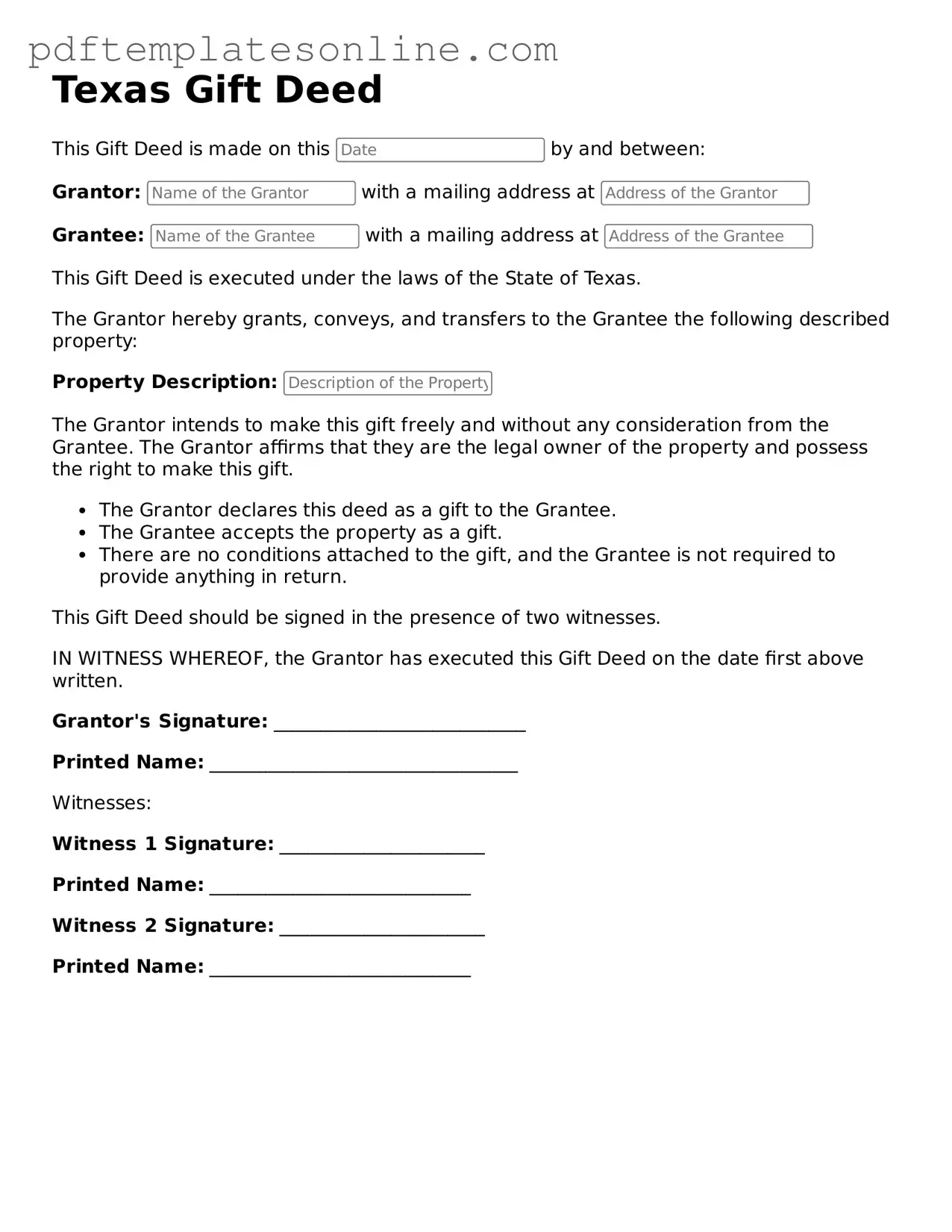Detailed Guide for Writing Texas Gift Deed
Filling out the Texas Gift Deed form is an important step in transferring property ownership. Once completed, the form should be filed with the appropriate county clerk's office to ensure that the transfer is legally recognized. Follow these steps to fill out the form accurately.
- Obtain the form: Download the Texas Gift Deed form from a reliable source or visit your local county clerk's office to get a physical copy.
- Identify the parties: Fill in the full names and addresses of both the giver (donor) and the recipient (grantee). Make sure to double-check the spelling.
- Describe the property: Provide a detailed description of the property being gifted. This includes the address and any legal descriptions, such as lot numbers or subdivision names.
- State the consideration: Indicate that the gift is being made without any monetary consideration. You can simply write "for love and affection" or a similar phrase.
- Sign the form: The donor must sign the form in front of a notary public. Ensure that the notary acknowledges the signature by completing the notary section of the form.
- File the deed: Submit the completed and notarized form to the county clerk’s office in the county where the property is located. Pay any required filing fees.
After filing, keep a copy of the deed for your records. This will serve as proof of the gift and the transfer of ownership.
